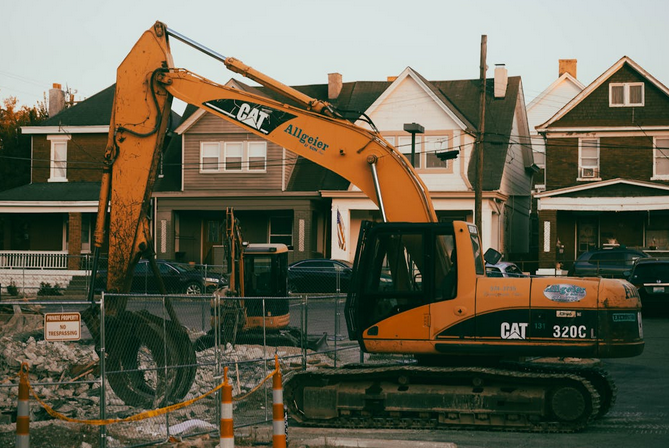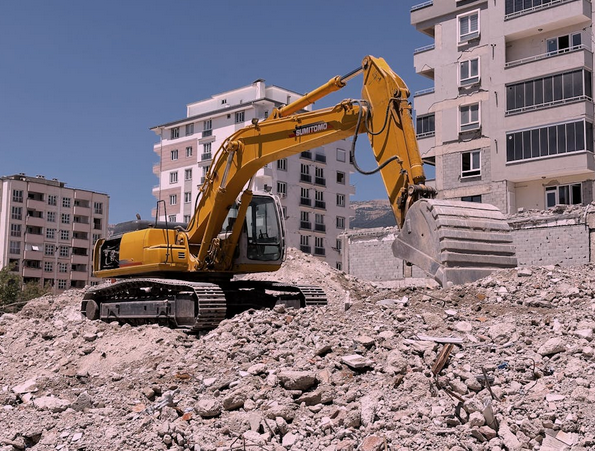Switching electricity providers can be an excellent way to save money or access better service plans. In Texas, consumers have access to various options, making it possible to find a plan that fits specific needs and lifestyles. However, many people rush into changing their providers without fully understanding the process or potential pitfalls. For those exploring different Texas electricity providers, this can result in unnecessary fees, service interruptions, or disappointing rates. Awareness of common mistakes can prevent these issues and make the transition smoother. Below, we explore the top mistakes people make when switching electricity companies and provide practical guidance for avoiding them.
Overlooking Early Termination Fees
A frequent mistake occurs when consumers fail to check their current contract for early termination fees. Switching to a new provider before a contract expires may result in penalties that offset potential savings. While many new providers offer incentives to cover these fees, this is not guaranteed. Reading the terms and conditions of your existing contract is essential to avoid unexpected charges. Comparing plans is important, but understanding the financial implications of leaving your current plan early ensures a more informed decision.
Not Reading the Electricity Facts Label (EFL)
The Electricity Facts Label is an essential document that details rates, fees, contract length, and other terms of service. After switching, many people skip reviewing this label, leading to confusion and surprise charges. The EFL clarifies aspects such as recurring fees, renewable energy options, and cancellation terms. Understanding this information equips consumers to choose based on complete, accurate details rather than marketing claims or generalized plan descriptions. Reviewing the EFL is a simple step that can prevent misunderstandings and promote better decision-making.
Ignoring Rate Structures and Usage Patterns

Another common error is selecting a plan based solely on the advertised price per kilowatt-hour without considering personal electricity consumption. Fixed-rate plans, variable-rate plans, and time-of-use rates all affect monthly bills differently depending on usage patterns. Consumers often assume that the lowest headline rate will yield the lowest bills, but this is not always true. Evaluating historical electricity usage can help determine which plan aligns with lifestyle habits, ensuring that your choice saves money rather than increasing costs unexpectedly.
Overlooking Additional Fees and Charges
Even when advertised rates appear competitive, additional fees can make a plan more expensive than anticipated. Some plans include monthly service fees, paper billing fees, or charges for exceeding usage limits. Failing to account for these fees is a common mistake that leads to unexpected costs. To avoid this, carefully examine the plan’s fine print and calculate estimated monthly expenses based on actual consumption. This approach allows consumers to compare total costs accurately rather than focusing on a single component, preventing unpleasant surprises on the first bill with a new provider.
Failing to Confirm Service Activation and Start Dates

A final frequent error occurs when consumers assume that service begins automatically after switching. Miscommunication or delays can result in temporary service interruptions. Confirming the activation date, start of billing, and any required actions with both the outgoing and incoming providers prevents gaps in electricity service. Additionally, verifying meter readings and account details helps ensure billing accuracy and avoids disputes later. Taking these proactive steps fosters a smooth transition and prevents frustration that might otherwise detract from the benefits of switching.
Switching electricity companies can provide significant benefits, from lower costs to more flexible plans. However, common mistakes like overlooking early termination fees, ignoring rate structures, skipping the Electricity Facts Label, neglecting additional charges, and failing to confirm service activation can reduce these advantages. Careful research, a thorough review of contracts, and attention to personal usage habits can help consumers avoid these pitfalls. By approaching the process methodically, individuals can take full advantage of the competitive Texas electricity market, enjoying both convenience and savings without unnecessary complications.…











 Implementing recycling programs in your commercial space is a fantastic way to reduce waste and minimize environmental impact. By separating materials like paper, plastic, glass, and metal for recycling, you can divert a huge amount of waste from simply lying on the ground and ending up in landfills. Consider setting up designated bins throughout your facility for easy sorting by employees and staff. Educating your team about why recycling is important and providing clear guidelines on what truly can and cannot be recycled will help ensure the success of your program.
Implementing recycling programs in your commercial space is a fantastic way to reduce waste and minimize environmental impact. By separating materials like paper, plastic, glass, and metal for recycling, you can divert a huge amount of waste from simply lying on the ground and ending up in landfills. Consider setting up designated bins throughout your facility for easy sorting by employees and staff. Educating your team about why recycling is important and providing clear guidelines on what truly can and cannot be recycled will help ensure the success of your program. Are you looking for a hassle-free solution to manage your commercial waste efficiently? Hiring a professional commercial and industrial dumpster service could be the answer you’ve been searching for. These pros have the right knowledge and resources to handle proper waste disposal in the most environmentally friendly manner. By working with a reputable waste disposal company, you can finally ensure your commercial waste is disposed of responsibly.
Are you looking for a hassle-free solution to manage your commercial waste efficiently? Hiring a professional commercial and industrial dumpster service could be the answer you’ve been searching for. These pros have the right knowledge and resources to handle proper waste disposal in the most environmentally friendly manner. By working with a reputable waste disposal company, you can finally ensure your commercial waste is disposed of responsibly.



















 Nothing oozes sophistication and grandeur quite like classic luxury cars. These vehicles boast luxurious interiors with plenty of amenities and advanced features that provide a comfortable ride for their passengers. High-end materials such as leather and chrome give these cars a timeless elegance that makes them classic.
Nothing oozes sophistication and grandeur quite like classic luxury cars. These vehicles boast luxurious interiors with plenty of amenities and advanced features that provide a comfortable ride for their passengers. High-end materials such as leather and chrome give these cars a timeless elegance that makes them classic.

 Making dog food can be much more affordable than buying pre-made commercial brands. You can buy ingredients in bulk and make a large batch of food that will last for weeks. This way, you don’t have to worry about constantly purchasing expensive bags of kibble or cans of wet food. Also, your pup will get the highest quality ingredients, much healthier than many processed foods found in commercial brands.
Making dog food can be much more affordable than buying pre-made commercial brands. You can buy ingredients in bulk and make a large batch of food that will last for weeks. This way, you don’t have to worry about constantly purchasing expensive bags of kibble or cans of wet food. Also, your pup will get the highest quality ingredients, much healthier than many processed foods found in commercial brands.

 Many fashion startups make the mistake of not investing in quality. They try to save money using cheaper materials and production methods, but this often backfires. Customers can tell when a product is cheaply made, and they will be less likely to buy it. Additionally, using cheaper materials can lead to products that fall apart quickly, which will only frustrate your customers and damage your reputation. It is always better to invest in quality, even if it means spending a bit more money upfront.
Many fashion startups make the mistake of not investing in quality. They try to save money using cheaper materials and production methods, but this often backfires. Customers can tell when a product is cheaply made, and they will be less likely to buy it. Additionally, using cheaper materials can lead to products that fall apart quickly, which will only frustrate your customers and damage your reputation. It is always better to invest in quality, even if it means spending a bit more money upfront.

 This is probably the most critical poker tip on this list. No matter how good you are at reading your opponents or how strong your hand is, there will be times when you should just fold. The key is to know when to do it. For example, suppose you’re up against an opponent constantly raising and have a marginal hand. In that case, it’s probably not worth risking your chips. Just fold and wait for a better opportunity. Trust us, there will be plenty of other hands to play with. So, these are some of the best tips to stay on top at poker and avoid losing money.
This is probably the most critical poker tip on this list. No matter how good you are at reading your opponents or how strong your hand is, there will be times when you should just fold. The key is to know when to do it. For example, suppose you’re up against an opponent constantly raising and have a marginal hand. In that case, it’s probably not worth risking your chips. Just fold and wait for a better opportunity. Trust us, there will be plenty of other hands to play with. So, these are some of the best tips to stay on top at poker and avoid losing money.
 Asking your target market questions is a great way to get feedback and learn about their needs and wants. This can be done through polls and surveys. In fact, polls and surveys are the most commonly used method to conduct market research. You can create polls on social media platforms like Twitter and Facebook or survey tools like SurveyMonkey. Make sure your questions are clear, concise, and easy to answer. You can also use this method to collect data for customer segmentation.
Asking your target market questions is a great way to get feedback and learn about their needs and wants. This can be done through polls and surveys. In fact, polls and surveys are the most commonly used method to conduct market research. You can create polls on social media platforms like Twitter and Facebook or survey tools like SurveyMonkey. Make sure your questions are clear, concise, and easy to answer. You can also use this method to collect data for customer segmentation.
 German Shepherds are an excellent choice if you’re looking for a dog breed that can protect your family. These dogs are known for their loyalty and courage and will go to great lengths to protect their loved ones from harm.
German Shepherds are an excellent choice if you’re looking for a dog breed that can protect your family. These dogs are known for their loyalty and courage and will go to great lengths to protect their loved ones from harm. For me, the most insane thing is that German Shepherds are not only good at physical tasks but are insanely a genius breed. German Shepherds are ranked third in intelligence by Coren’s Intelligence of Dogs, falling behind only the Border Collie and Poodle. German Shepherds have been used extensively in police work and military operations because of their high intelligence and trainability. German Shepherds are also used in search and rescue operations and as service dogs for the disabled. So, not only are they good-looking dogs, but they’re one of the smartest dog breeds, too.
For me, the most insane thing is that German Shepherds are not only good at physical tasks but are insanely a genius breed. German Shepherds are ranked third in intelligence by Coren’s Intelligence of Dogs, falling behind only the Border Collie and Poodle. German Shepherds have been used extensively in police work and military operations because of their high intelligence and trainability. German Shepherds are also used in search and rescue operations and as service dogs for the disabled. So, not only are they good-looking dogs, but they’re one of the smartest dog breeds, too.
 The Walker Art Museum is one of the top art museums in Liverpool and is a must-see for anyone interested in art. The museum has an extensive collection of paintings, sculptures, and other works from artists worldwide. It also has several interactive exhibits that allow visitors to explore different types of art. In this museum, you can see the best piece of art from the renaissance period to the present.
The Walker Art Museum is one of the top art museums in Liverpool and is a must-see for anyone interested in art. The museum has an extensive collection of paintings, sculptures, and other works from artists worldwide. It also has several interactive exhibits that allow visitors to explore different types of art. In this museum, you can see the best piece of art from the renaissance period to the present. If you’re a fan of football (or soccer, as it’s known in the United States), you need to visit Anfield Stadium. It is the home stadium of Liverpool Football Club and is one of the most iconic stadiums in the world. Tours of the stadium are available and include access to areas like the players’ tunnel and the press room.
If you’re a fan of football (or soccer, as it’s known in the United States), you need to visit Anfield Stadium. It is the home stadium of Liverpool Football Club and is one of the most iconic stadiums in the world. Tours of the stadium are available and include access to areas like the players’ tunnel and the press room. Liverpool is home to several world-class restaurants, so you need to try a few whiles in the city. Some of our favorites include Panoramic 34, Gusto, and Alfresco. These restaurants offer a variety of cuisines ranging from Italian to Indian. They also provide a great view of the city, so be sure to ask for a table on the patio.
Liverpool is home to several world-class restaurants, so you need to try a few whiles in the city. Some of our favorites include Panoramic 34, Gusto, and Alfresco. These restaurants offer a variety of cuisines ranging from Italian to Indian. They also provide a great view of the city, so be sure to ask for a table on the patio.
 Your bedroom is your sanctuary. It’s the one place in your home where you can truly relax and be yourself. That’s why it’s so important to make sure your bedroom reflects your unique style and personality.
Your bedroom is your sanctuary. It’s the one place in your home where you can truly relax and be yourself. That’s why it’s so important to make sure your bedroom reflects your unique style and personality. One of the most important aspects of bedroom decor is choosing the right color scheme. You’ll want to pick colors that reflect your personal style and make you feel happy and relaxed.
One of the most important aspects of bedroom decor is choosing the right color scheme. You’ll want to pick colors that reflect your personal style and make you feel happy and relaxed. Once you’ve chosen the perfect furniture for your space, it’s time to accessorize. Take a look at the following:
Once you’ve chosen the perfect furniture for your space, it’s time to accessorize. Take a look at the following:
 Before buying any smoking or vaping product online, you need to consider the quality of the products. If you’re looking for a high-quality product, be prepared to pay more money. However, if you’re not willing to spend a lot of money, you may end up with a low-quality product that doesn’t work well.
Before buying any smoking or vaping product online, you need to consider the quality of the products. If you’re looking for a high-quality product, be prepared to pay more money. However, if you’re not willing to spend a lot of money, you may end up with a low-quality product that doesn’t work well. It will be best also to consider your budget when making the purchase. This is because many different types of smoking and vaping equipment come in a wide range of prices. You do not want to spend more than you can afford on something you may only occasionally use.
It will be best also to consider your budget when making the purchase. This is because many different types of smoking and vaping equipment come in a wide range of prices. You do not want to spend more than you can afford on something you may only occasionally use.
 Another way to make sure that you are spending your money and time wisely is by researching any site you might be interested in. There are many review sites online where players like yourself leave their feedback on the different bingo websites they’ve played at. You can also search for forums or chat rooms, as these places tend to have lively discussions about various sites. This is a great way to find out which sites are reliable, honest, and pay on time. By taking the time to do this research, you will save yourself from doing business with any scam websites that might be lurking in your search results.
Another way to make sure that you are spending your money and time wisely is by researching any site you might be interested in. There are many review sites online where players like yourself leave their feedback on the different bingo websites they’ve played at. You can also search for forums or chat rooms, as these places tend to have lively discussions about various sites. This is a great way to find out which sites are reliable, honest, and pay on time. By taking the time to do this research, you will save yourself from doing business with any scam websites that might be lurking in your search results.

 If you want to live sustainably and environmentally friendly, you can install solar panels on your roof. Solar panels are now cheaper, more accessible, and more efficient than ever before. This is your chance to get off the grid and save money. Depending on where you live (Australians get a lot of sunshine year-round), you can generate enough energy to power all or part of your home. Also, these rooftop installations are very trendy. It’s not a trend. Going green can be a lifestyle. But that doesn’t mean you have to change your daily habits drastically. You can make some changes in your home, and you will have a better relationship with Mother Earth.…
If you want to live sustainably and environmentally friendly, you can install solar panels on your roof. Solar panels are now cheaper, more accessible, and more efficient than ever before. This is your chance to get off the grid and save money. Depending on where you live (Australians get a lot of sunshine year-round), you can generate enough energy to power all or part of your home. Also, these rooftop installations are very trendy. It’s not a trend. Going green can be a lifestyle. But that doesn’t mean you have to change your daily habits drastically. You can make some changes in your home, and you will have a better relationship with Mother Earth.…

 Stop buying bottled water. Plastic bottles are increasing in landfills. A gallon of water costs more than a gallon of gasoline, according to one of my sources. It’s been that way for me. I am not willing to pay a higher price for water. You can buy a metal water container or a plastic bottle with the number “5” on it. The plastic with the number 5 is the best for water. Each family member should have their bottle. You should pack your bottle if you plan to be gone for a while or if you are going to be outside in the heat. I wouldn’t feel guilty enough to buy a water bottle, so that I would buy a soda instead. It has been a learning process for me, so I recommend getting used to this new habit.
Stop buying bottled water. Plastic bottles are increasing in landfills. A gallon of water costs more than a gallon of gasoline, according to one of my sources. It’s been that way for me. I am not willing to pay a higher price for water. You can buy a metal water container or a plastic bottle with the number “5” on it. The plastic with the number 5 is the best for water. Each family member should have their bottle. You should pack your bottle if you plan to be gone for a while or if you are going to be outside in the heat. I wouldn’t feel guilty enough to buy a water bottle, so that I would buy a soda instead. It has been a learning process for me, so I recommend getting used to this new habit. After six months, at the latest, it will become second nature to carry a bottle before it’s too late. Each month this will challenge you to learn an eco-friendly trick. When you find something you don’t want to throw away, you can Google it to see if anyone else has found a way to extend the item’s life. You’ll be surprised at the results you find. If you are inspired by one of the results, you can save it and use it as a planning tool for the next month. This challenge is fun, and you can get your kids involved. Young children have the best imaginations and will be a great help to you in this challenge. At the end of six months, you’ll have at least six new tricks, but I bet you’ll have discovered and learned twice as many. It will never become part of your daily life if it is too strange to you.…
After six months, at the latest, it will become second nature to carry a bottle before it’s too late. Each month this will challenge you to learn an eco-friendly trick. When you find something you don’t want to throw away, you can Google it to see if anyone else has found a way to extend the item’s life. You’ll be surprised at the results you find. If you are inspired by one of the results, you can save it and use it as a planning tool for the next month. This challenge is fun, and you can get your kids involved. Young children have the best imaginations and will be a great help to you in this challenge. At the end of six months, you’ll have at least six new tricks, but I bet you’ll have discovered and learned twice as many. It will never become part of your daily life if it is too strange to you.…
 Marking bingo cards counteracts this by forcing individuals to distinguish numbers and colors in their minds. This decline in comprehension is exacerbated in individuals with dementia. In tests conducted, people with dementia exposed to extreme contrasts were able to navigate where they lived.
Marking bingo cards counteracts this by forcing individuals to distinguish numbers and colors in their minds. This decline in comprehension is exacerbated in individuals with dementia. In tests conducted, people with dementia exposed to extreme contrasts were able to navigate where they lived. Putting a black couch in a white place can produce the same specific results in patients with dementia. Reinforced comparisons help people make psychological distinctions between different assets. bingo is powerful and also favored as a result of social facets. Bingo games cause seniors to get together and form friendships.
Putting a black couch in a white place can produce the same specific results in patients with dementia. Reinforced comparisons help people make psychological distinctions between different assets. bingo is powerful and also favored as a result of social facets. Bingo games cause seniors to get together and form friendships.
 Campers who drive a large,
Campers who drive a large,  A fire ring for campfires, a campground with sunlight to warm your gear on cool mornings, and paint to keep it cool in the evenings, along with a flat space to prepare outdoor living space for extended stays, are significant. There should be water and sewer stations. Other features are personal and spacious campsites with lovely scenic views. Many national parks have more secluded campsites. These regions also often have beautiful bird and wildlife viewing spots.
A fire ring for campfires, a campground with sunlight to warm your gear on cool mornings, and paint to keep it cool in the evenings, along with a flat space to prepare outdoor living space for extended stays, are significant. There should be water and sewer stations. Other features are personal and spacious campsites with lovely scenic views. Many national parks have more secluded campsites. These regions also often have beautiful bird and wildlife viewing spots.


 I think that it’s vital for your dog as well as you. Dogs with large bellies are more inclined to sleep. Many dogs eat everything the moment they leave the home; others, particularly if fed , do not bother with food till they come home. In case your pet eats when you’re there, continue to nourish him and wait patiently for him to consume until you depart. But in case you’ve got a dog vulnerable to gastrointestinal bloat and torsion, then it is not a good idea to feed him a meal since you leave the home.
I think that it’s vital for your dog as well as you. Dogs with large bellies are more inclined to sleep. Many dogs eat everything the moment they leave the home; others, particularly if fed , do not bother with food till they come home. In case your pet eats when you’re there, continue to nourish him and wait patiently for him to consume until you depart. But in case you’ve got a dog vulnerable to gastrointestinal bloat and torsion, then it is not a good idea to feed him a meal since you leave the home. This suggestion will not always work if you are a dog that suffers from separation anxiety, but for puppies that get tired when they are home alone, this may be a wonderful remedy. A puppy companion might be best, because they may fight and perform independently, but if you do not require another pup, a cat, parrot, or possibly a rabbit might be a terrific alternative. My pitbull is busy sitting in the conclusion of my spouse’s perch waiting for me to throw some coconut shavings, and my schnauzer spends a whole lot of time seeing my garden sailors scamper around my lawn.
This suggestion will not always work if you are a dog that suffers from separation anxiety, but for puppies that get tired when they are home alone, this may be a wonderful remedy. A puppy companion might be best, because they may fight and perform independently, but if you do not require another pup, a cat, parrot, or possibly a rabbit might be a terrific alternative. My pitbull is busy sitting in the conclusion of my spouse’s perch waiting for me to throw some coconut shavings, and my schnauzer spends a whole lot of time seeing my garden sailors scamper around my lawn.